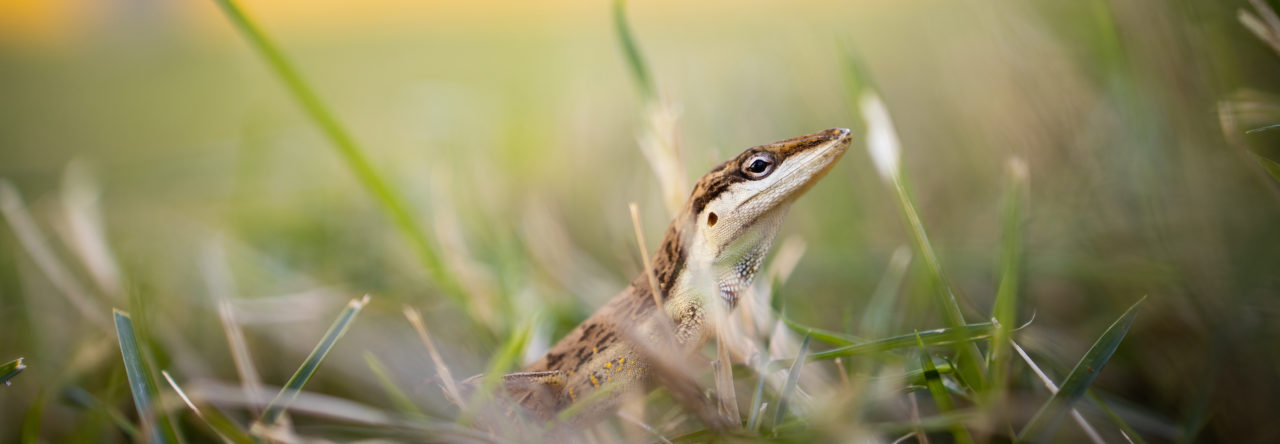
Anolis insignis above, Anolis transversalis below. Males on left, females on right. Photos appeared in Lizards in an Evolutionary Tree, photographed by Steve Poe (insignis), Arthur Georges (male transversalis) and Alexis Harrison (female transversalis).
Sexual dimorphism–differences between the sexes–have been greatly studied in anoles, and so has dewlap color and patterning. But little research has been directed to the phenomenon of sexual differences in dewlap color or pattern. Such differences are relatively rare in Caribbean islands, but much more common in mainland species. Why does this occur? Nobody knows. In fact, what female anoles use their dewlaps for has been little studied (another phenomenon, fodder for a future post, is differences in the size of the dewlap between the sexes, which can be quite substantial).
In any case, here’s a sampling of dimorphic dewlaps.
Anolis fitchi (female and male), and Anolis orcesi (female and male)
Anolis lyra, female on left (photos courtesy Fernando Ayala).
Anolis fowleri, as documented by Dan Scantlebury here.
And a recent post has just discussed this phenomenon in Venezuelan anoles, such as this one.
- Third Mexican Amber Anolis Lizard Discovered - January 14, 2025
- Anolis Lizard Research Paves the Way for Advances in Treatment of Human Prostate Cancer - January 10, 2025
- When Two Lizards Meet for the First Time, Scientists Witness Evolution in Action - January 3, 2025





J James
Ditto with the head bobbing thing. I’ve seen scant on this, mostly avian. In lizards, the literature usually presents bobbing as having a communication purpose, usually associated with dewlap display (e.g., Scott, 1984; Jenssen, 1977; McMann, 2000). I always assumed the primary purpose was to provide motion-based parallax as an aid to monocular vision (depth perception). Certainly, the giving and gathering of information by the same behavior are not mutually exclusive. Is there any lizard research on a visual purpose behind this behavior?